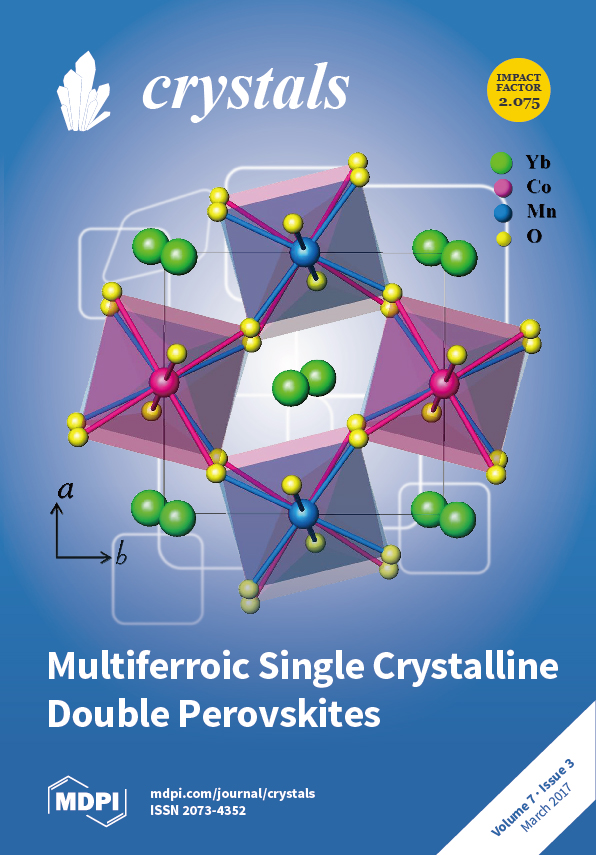Single crystals of two hybrid organic-inorganic molecular solids, benzyl pyridinium tetra(isothiocyanate)cobalt ([BzPy]
2[Co(NCS)
4]) (
1) and benzyl quinolinium tetra(isothiocyanate)cobalt ([BzQl]
2[Co(NCS)
4]) (
2), were grown using a slow evaporation growth technique at room temperature and
[...] Read more.
Single crystals of two hybrid organic-inorganic molecular solids, benzyl pyridinium tetra(isothiocyanate)cobalt ([BzPy]
2[Co(NCS)
4]) (
1) and benzyl quinolinium tetra(isothiocyanate)cobalt ([BzQl]
2[Co(NCS)
4]) (
2), were grown using a slow evaporation growth technique at room temperature and their IR, UV-Vis, X-ray crystal structures, luminescence, and magnetism were reported. The crystal structural analysis revealed that two molecular solids crystallize in the monoclinic space group
P2
1/
c of
1 and
P2
1/
n of
2. The cations form a dimer through weak C–H···π/π···π interactions in
1 and
2, and the adjacent cation (containing N(6) atom) in
2 forms a columnar structure through π···π weak interactions between the quinoline and benzene rings, while the anions in
1 form a layer structure via short S···Co interactions. The anions (A) and cations (C) are arranged alternatively into a column in the sequence of ···A–CC–A–CC–A··· for
1, while the two anions and cationic dimer in
2 form an alliance by the C–H···π, C–H···S and C–H···N hydrogen bonds. A weak S···π interaction was found in
1 and
2. The two molecular solids show a broad fluorescence emission around 400 nm in the solid state at room temperature, and weak antiferromagnetic coupling behavior when the temperature is lowered.
Full article





